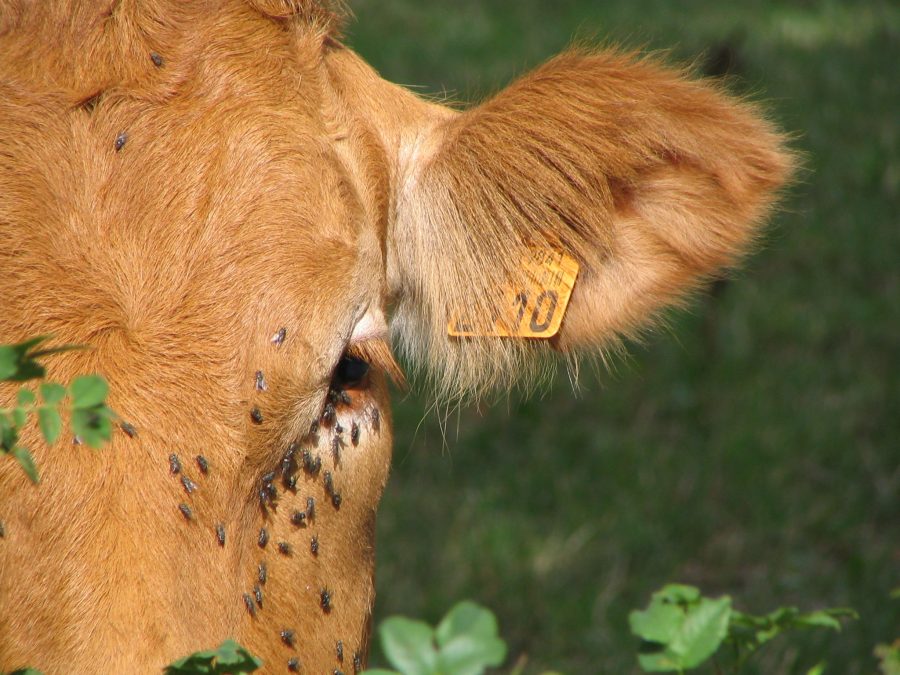Livestock keepers are warned to look out for the annual emergence of head flies (Hydrotaea irritans) from around mid-July, as these are a major source of annoyance for pastured cattle.
These flies hang around until late September, mating and depositing eggs in pasture soil and leaf litter, until colder weather kills them off.
Head flies, with their characteristic yellow abdomen and orange wing base are nuisance flies, as opposed to blood suckling types, such as the stable fly and horn fly. They cause considerable irritation as they feed on proteins from secretions such as saliva, tears, sweat and milk, and use this to mature their eggs.
“Head flies hang around in woodland and travel to and from the cattle several times a day,” explains Dr John McGarry, a fly specialist working at the University of Liverpool Institute of Veterinary Science and contributor to the Control of Worms Sustainably (COWS) Guide to insect pests of cattle.
“The males emerge first, followed by the females, usually in the last two weeks of July. The males die a week after mating and the females lay batches of eggs in the soil during August and September. These turn into carnivorous larvae which feed on insects in the ground. They grow slowly for ten months before emerging the following summer as adult flies.”
Cattle affected by head flies move to the shade, are restless and may stamp and swish their tails. This leads to less time spent grazing and decreased performance. Research has also linked head flies with the transmission of summer mastitis in dairy cows and heifers as they feed on secretions from the teats.
“Treating head fly infestations is usually through applying synthetic pyrethroid chemicals,” says Dr McGarry. “But avoiding grazing on wet, low-lying fields near woods from July to September may reduce head fly numbers. Stock should be checked at least once a day. Head flies are more commonly a problem in the north of the UK than the south.
“Chemical control may include insecticide-impregnated ear tags which give five months cover and should really have been applied at turn-out, and ‘pour-on’ treatments, which need re-applying every three weeks, depending on the fly challenge and if there has been heavy rainfall.
“Sprays applied via a knapsack are also available, which have a repellent action, but again, do need re-applications.”
Where insecticides are not used, applying teat sealant to pregnant heifers and dry cows can help stop the spread of summer mastitis bacteria by flies. Garlic licks, fly trapping and the use of fly predators, may offer some form of fly control, but there is little evidence to support this in grazing animals.
There is more information on head flies and many other flies that affect cattle in the Control of Worms Sustainably (COWS) manual, which can be found at www.cattleparasites.org.uk
To receive regular copies of The Country Smallholder magazine featuring more content like this, subscribe here.
For FREE updates from the world of smallholding, sign up for The Country Smallholder newsletter here.








